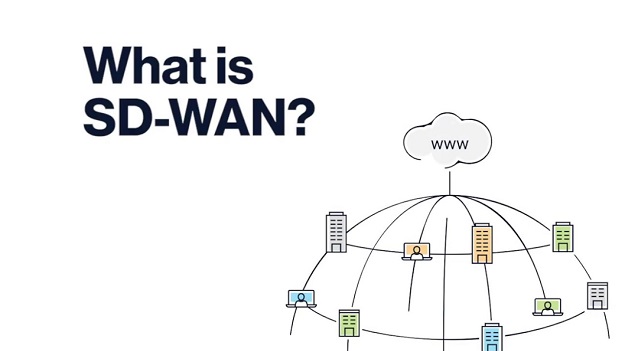Rapid development of artificial intelligence (AI) and automation continue to disrupt a number of different industries, both expected and sometimes rather unexpected. In the ongoing transition to more automated solutions, it didn’t take long to determine software-defined wide area network (SD-W
AN) would likely be the technology driving WAN connectivity forward in the future.

Software continues to emerge as a major innovator, absolutely pushing hardware to new limits. Traditional WANs are expensive to deploy, as they require numerous devices to be installed – and maintained – in branch offices, using expensive bandwidth and siloed management tools to properly run. SD-WAN offers real-time network metrics, such as bandwidth latency, availability, packet loss, and other critical measurements are analyzed – and corrected – to distribute optimal resources to each satellite location automatically.
In addition, even though multiprotocol label switching (MPLS) has long served as the most popular WAN routing technique, analysts recommended companies prepare to replace MPLS for SD-WAN moving forward. The MPLS technologies that helped connect branches together have always been rather expensive, and that’s a key driving force behind a switch to SD-WAN.
An SD-WAN is the ideal solution especially when a company is split between offices or remote branches that already benefit from adopting emerging Internet of Things (IoT) trending solutions. With employees using more cloud-based services, there is little wiggle room for insufficient bandwith allocation, so high-performance must be a careful consideration for IT teams.
Achievable SD-WAN Benefits
There are clear SD-WAN benefits which organizations can capitalize upon after making the decision to modernize their network infrastructure. At a high level, SD-WANs are able to utilize multiple WAN connections to take that pooled bandwidth and share it, though IT officials are able to add and remove connections based on necessity. This policy-driven management interface is centralized to make sure all traffic is properly monitored and allocated to the resources. The dynamic approach eases the burden on IT, yet still ensures the network is able to operate effectively.
Deployment and management tend to both be relatively easy with SD-WAN services, as it’s usually a straightforward operation heavy on monitoring tools and automation. IT personnel do not need to be dispatched to branch offices, with bandwidth able to be remotely controlled by operators. Different applications require varying levels of network access, while other programs might need additional bandwidth to achieve optimum success.
Transitioning into a fully digital world comes with its own inherent security risks, as companies try to aim for increased worker productivity and customer satisfaction. However, cybersecurity remains a major concern, though SD-WAN solutions tend to have varying levels of integrated security protocols – but still might require IT managers to utilize additional security protocols to reduce the risk of downtime or disruption.
Strategic SD-WAN installations should be able to lower network complexity – and decrease burden on often overtaxed IT teams – due to enhanced and automated traffic monitoring tasks. The SD-WAN operates in a way that allows it to delegate traffic flow to different offices, which greatly helps prioritize busier offices over ones that don’t need as much bandwidth.
SD-WAN benefits include increased security, as all traffic is encrypted while it moves location-to-location, in addition to other built-in security protocols. These enhanced security efforts are critical at a time when cybercriminals are continually trying to breach networks owned and operated by companies, in an effort to steal company information, customer data, and disrupt daily activities.
IT spending can often spiral out of control at a dizzying rate. SD-WANs are optimized for the cloud, and can typically be powered by off-the-shelf hardware that won’t cost an arm and a leg to purchase. Coupled with this fact, organizations striving for SD-WAN deployment can enjoy a somewhat à la carte product purchase – choose from on-premise, cloud, or a hybrid mix of both – as the product management benefits offer real-world return on investment (ROI).
Final Thoughts
For companies considering an SD-WAN solution, analysts expect 2021 to be a fantastic year due to rapid market acceleration. Although there were some deployment delays due to the Covid-19 pandemic, increased demand in modernizing WAN infrastructure is expected to ramp up this year.
Also, SD-WAN should always be thought of more as a technology solution and not some generic product that is just purchased and installed. There is no shortage of SD-WAN providers, despite the market consolidation that is ongoing, so an interested company should practice due diligence when searching for a provider.
There are plenty of reasons to migrate to SD-WAN solutions, but decision makers and IT managers must do their research and determine if it’s the right fit for their own enterprise environment.




